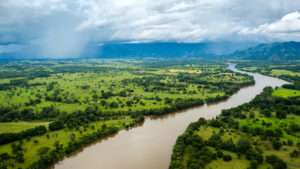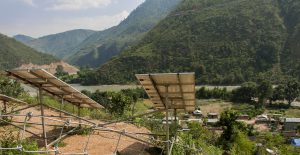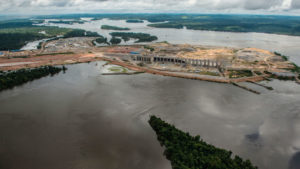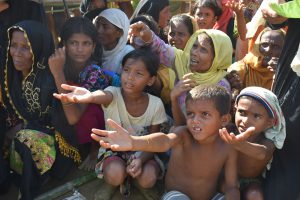On Google Maps Kol-e-Hashmat Khan, a 191-hectare wetlands area, is a big blue blob on the outskirts of Kabul. In late September, though, when a group of journalists attending a workshop arranged by Afghanistan’s National Environment Protection Agency (NEPA) and Action on Climate Today (ACT), and led by thethirdpole.net, arrives, it is all but dry. The only water is hidden within a small patch of green, behind weeds that tower over us.

Previous plans had neglected water, with only 5% of development going into the water sector from 2005 to 2015 in a country which is overwhelmingly rural, and water usage in agriculture hovering above 85% of the total. The government has sought to correct that, with a national adaptation plan in the making, headed by NEPA.
In real terms Afghanistan is not a major contributor to climate change. In fact it is barely a minor contributor. Going by per capita emission of the greenhouse gases that lead to climate change, Saudi Arabia clocked in at 19.5 metric tonnes in 2014, with the US at 16.5, China at 7.5 and India at 1.73. Even within South Asia, the only country with emissions near that of Afghanistan’s (0.299 metric tonnes) was Nepal (0.284). It is also worth mentioning that the US was already producing 16 metric tonnes of carbon dioxide emissions per person in 1960 (China was at 1.2, and India was at 0.3) when Afghanistan’s per capita emission was recorded by the World Bank as zero.
Despite its low contribution to the problem, Afghanistan is deeply vulnerable to the effects of climate change. According to the UN Development Programme (UNDP), “Since 1978, the arable area has declined by about 60%, leaving only 12% of the land now suitable for farming.” Up to 80% of Afghanistan’s agricultural sector depends on rainfall for irrigation, so this 12% is deeply threatened by variations in rainfall patterns. Increased variations in rainfall patterns along with heightened temperatures are the principal effects of climate change.
A detailed report by UNEP and the World Food Programme has estimated the effects of climate change on Afghanistan’s agriculture sector as impacting everything from livelihood security, to gender imbalances, to droughts and floods. In the face of this advancing threat the most important thing that Afghanistan can do is manage the water bodies – whether natural or manmade lakes, or wetlands. These help manage floods by absorbing water, they allow water to seep into the ground recharging the groundwater, and they keep the overall temperature stable by absorbing and distributing the heat of a city. But they can only do so if they are not built over.

The designation of the Kol as a protected area – the only one in Kabul – makes Kol-e-Hashmat Khan a test case of how seriously Afghanistan will address the issue of adapting to the changing climate, and preserving the natural bulwarks it has. Given that it is within the capital region, the success of the government’s efforts – and its commitment to deal with the issue – will be clearly visible to even the most casual visitor. To the group that visited the area – journalists and students, many of whom had not even known of the wetlands – it was immediately obvious that something had to be done. They discussed story ideas, social media campaigns and civil society actions that could be undertaken to defend and maintain the area.
If such moves, by both the government and citizen groups, can be sustained and replicated in Afghanistan, this country that has suffered so much, may have a chance to save its water bodies.
![<p>The dry condition of Kabul’s largest wetland [image by: Omair Ahmad]</p>](https://dialogue.earth/content/uploads/2017/10/20170927_101009-300x169.jpg)








